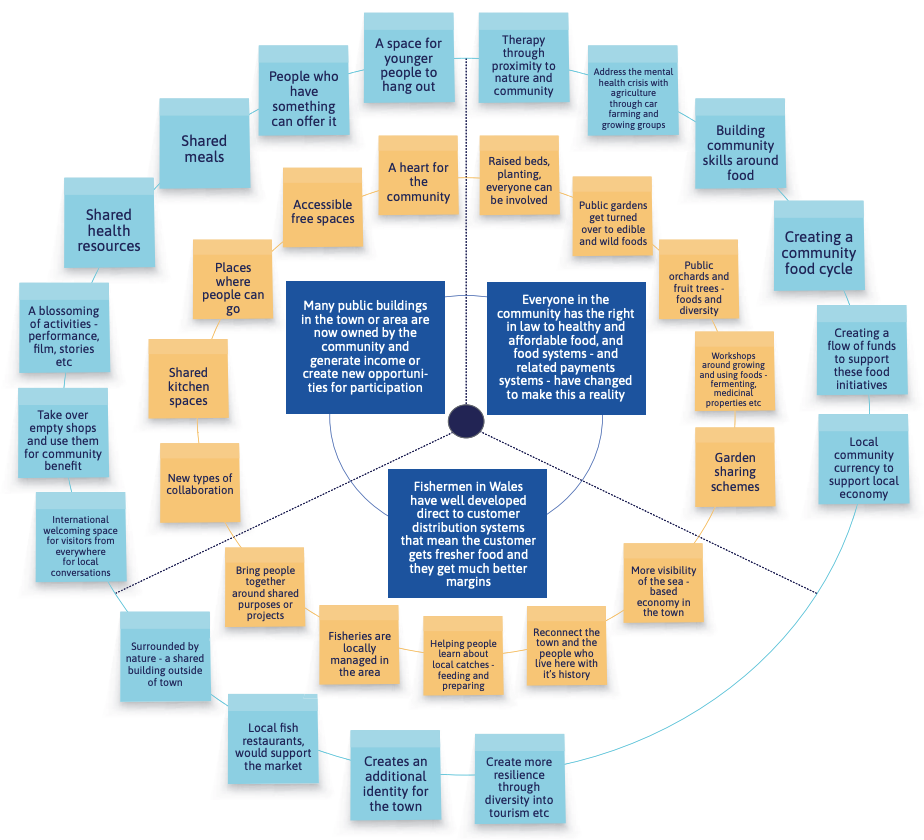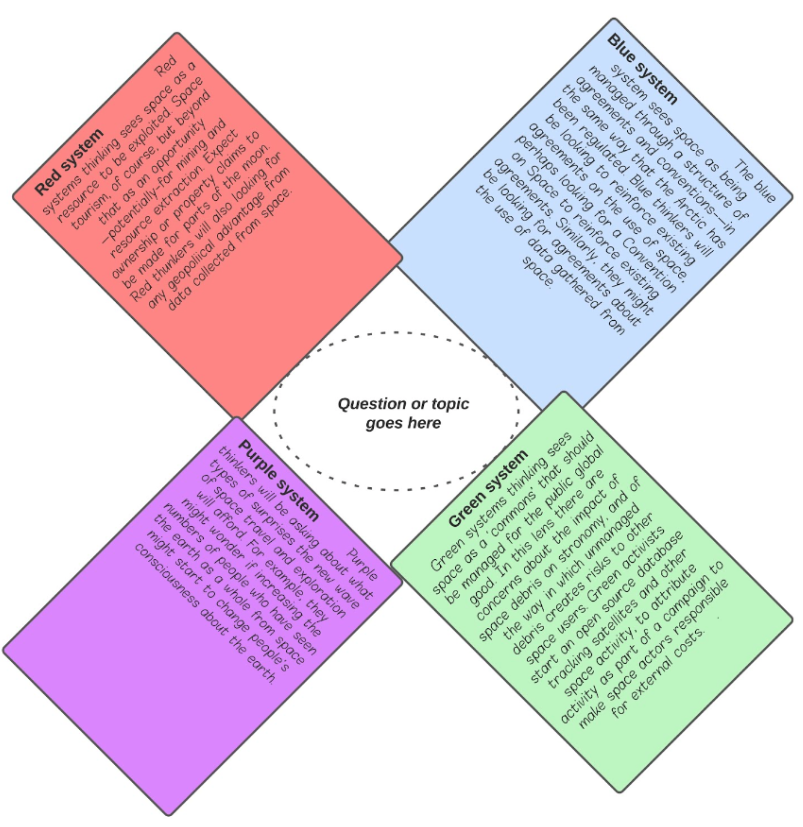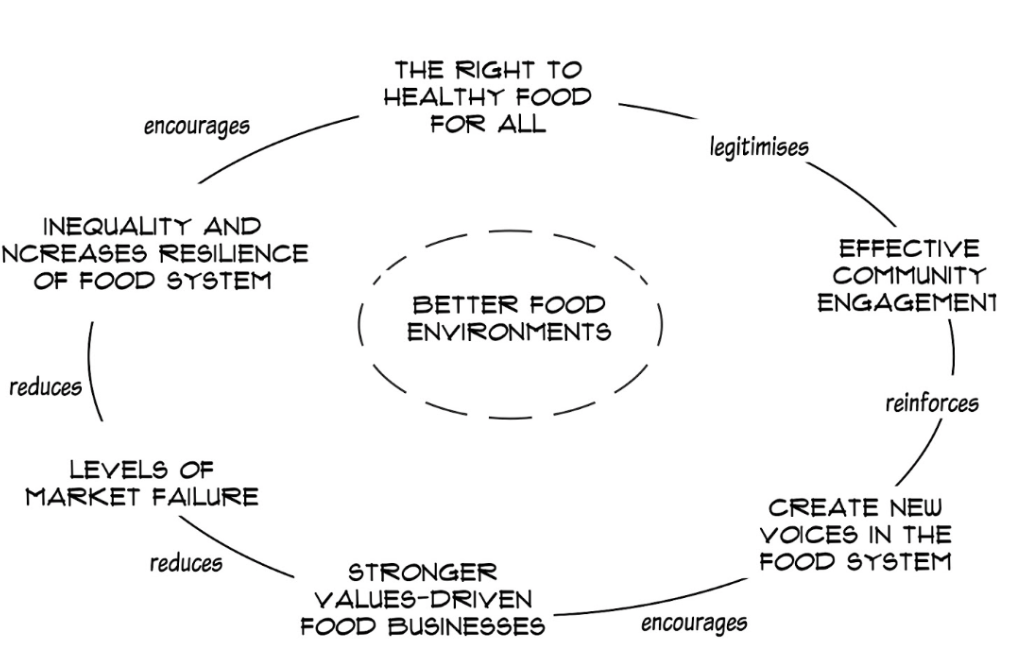In the first ten years, I worked as a futurist, I did a lot of complex scenarios projects involving highly technical methods. These days, I prefer accessible methods that people can pick up and use without needing a helpful futurist on hand. In this edition of the newsletter, I am going to talk about some of these methods.
Futures wheels
The futures wheel is designed to help a group explore together not just the immediate consequences of change, but the second-order consequences as well, and to visualise it. It is sometimes known as an implications wheel. It was invented in 1971 by the futurist Jerry Glenn, and it may have been the first widely available futures method that is repeatable. In our community futures project with Wales Community and Voluntary Action, we used it as a way to help groups build mini-scenarios. (The WCVA Toolkit includes a guide on how to do this.)

Like a lot of the tools we use, the visual mapping element is important, since it supports and encourages dialogue. There is also an example of using a futures wheel to think about policy issues in our 2020 paper on ‘The long pandemic’.
Systems mythologies
The Systems Mythologies method was developed by the Institute for the Future in California. It has colour-coded typologies for four systems. The four systems are: red, or ‘winner takes all’; blue, or ‘rules matter’; green, or ‘everything is connected’; and purple, or ‘reimagining the whole system.’ (The IFTF Systems Mythologies Toolkit says that Purple ‘lives outside of our familiar experience of the world’!)
We developed a workshop exercise from this that uses these as a set of ‘futures hats’. The exercise is simple: You look at the issue through each of these lenses in turn. Starting with blue or red usually works best. It helps people imagine how an issue looks to people with competing worldviews. The process makes visible areas of conflict and possibilities for innovation and helps you think about blindspots. Here’s an example of some output using Systems Mythologies to look at the future of space.

Flywheels of change
People talk about ‘futures labs’, but it is usually more low tech than that. It’s more like noticing something at the back of the garage that might be useful and hauling it onto a workbench to make some modifications. That was how we decided to use Jim Collins’ ‘Flywheel’ model to describe a theory of change. It’s typically used in the private sector to describe a successful self-reinforcing business model. (Hence the name: a flywheel gathers speed as it spins.) But there’s no reason it can’t be used to describe a successful model of social change as well. This is one about improving equity in urban food systems.

And let’s face it: most theory of change diagrams are far too complicated to be used to shape strategy. Do borrow these tools and try them out. And do, please, credit their originators.
Interested in learning more about SOIF’s work and the tools and methods we use, contact Andrew Curry.
